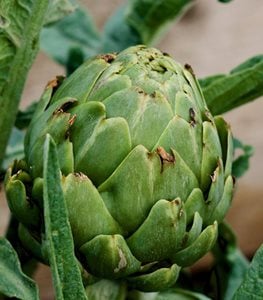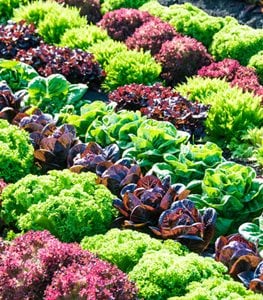GET A HEADSTART WITH THESE 16 SPRING VEGETABLES
From artichokes to turnips, there are plenty of veggies to grow in your spring gardenWant to get a jump on your vegetable garden? Here’s a round-up of cool-season vegetables to grow this spring!
Artichoke
Grown for their tender, edible flower buds, artichokes are perennial vegetables in mild climates and can be planted as annuals each spring in cold climates. In warmer climates like the California coast, you can begin harvesting in late-spring or early-summer.
Beets
Beets come in red, yellow, and white varieties and are at their sweetest when grown in a sunny location in cool weather. It is best to harvest beets when they are small, and they will push themselves up and out of the ground as they mature.
Broccoli
Broccoli likes cool weather and a sunny spot to grow in, although it may take a few tries to get it right. According to Barbara Pleasant in her book Homegrown Pantry, “timing, soil fertility, spacing, and pest management - broccoli’s rather exact needs must be met.”
Cabbage
Cold weather triggers the production of sugar in the leaves, so be sure and get your cabbage planted early on so it can benefit from a light frost or two. Cabbage plants need to be protected from damage inflicted by rabbits and deer, although it seems they may be less attracted to the red-leaf varieties. These darker-leaved varieties also make it easier to see pests such as cabbageworms.
Carrots
Carrots come in a variety of colors, not just the typical orange. Seeds should be sown directly in the garden and not transplanted. Carrots like a location with full sun and deep, loose soil. Barbara Pleasant recommends Nantes types (‘Early Nantes’, ‘Nelson’, and ‘Mokum’) for spring-grown carrots because they “grow fast and keep their sweet flavor in warm soil.”
Cauliflower
Cauliflower not only comes in the common white variety, but there are also green, purple, and orange varieties. It can be a challenge to grow cauliflower. “A good harvest depends on cool temperatures, ample moisture, and plenty of organic matter in the soil,” John Whitman, Fresh from the Garden.
Celery
Can be grown from seed or cutting, using the cut-off base (place in water to root, and then into soil). Homegrown celery will have a stronger flavor than store-bought. Individual stalks can be cut from the outside of the plant and used as needed.
Collards
Able to withstand a much wider temperature range, collards are a popular cooking substitute for cabbage in the south where cabbage may prove to be a difficult crop to grow. Collards are high in vitamin K and calcium.
Kale
Kale can be grown in containers or in the ground. Plant in a sunny spot with moist soil. Cool weather will help kale to be at its best. This dark green veggie is highly nutritious and comes in three main types: Tuscan kale, curly kale, and flat-leafed Russian kale.
Leeks
Although leeks look like large green onions, they have a milder taste. They grow best in full sun, but will tolerate light shade. Young leeks can be harvested and used as microgreens in salads. If they are left to flower, they will produce an abundance of seeds.
Lettuce
Plant lettuces in the ground in rows, blended in with other vegetables, or even in a mixed border with flowers. Lettuce plants also make a great choice for container gardens as they don’t take up much room. Plant an assortment for a mixed salad fresh from the garden.
Peas
Sweet peas, snow peas, and snap peas are best grown in cooler weather. Snap peas provide better production and can be eaten whole, without shelling like sweet peas. “Some varieties make beautiful edible ornamentals to grow near garden entryways or another highly visible spot,” Barbara Pleasant.
Radishes
As a general rule, smaller round varieties are better for spring growing when the soil is still cool and the days are just starting to warm up. Radishes are fast growers and have a peppery flavor.
Spinach
Spinach is the most cold-tolerant of salad greens. Plant in batches to extend your harvest, as spring-grown spinach won’t last long in the garden once the days begin to warm up. Spinach can be harvested by the leaf (outer leaves first) or the entire plant.
Swiss Chard
This ornamental edible is available in varieties with orange, pink, red, yellow, or white ribs. Seed packs can be purchased in mixtures for a colorful garden display. For better harvest, however, the white-stemmed varieties generally perform better. Swiss chard is a favorite of deer, so keep it protected if deer are in the area.
Turnips
Both the roots and the greens of turnips are edible on these quick-growing vegetables. For best flavor, turnips should be harvested before warmer weather. Turnips can also be grown in containers if given enough depth.
Vegetable Gardening Books
RELATED:
How to Start a Vegetable Garden
Fall Vegetables
14 Summer Vegetables
How to Start an Herb Garden
When you purchase products through links on our site, we may receive an affiliate commission. Thank you for your support.





















